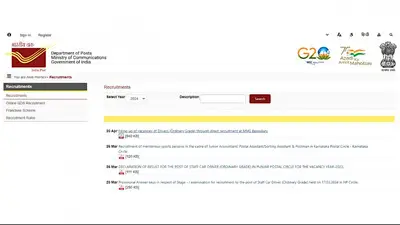Recommended Stories
The industry owed its origin to an enterprising sub-inspector of schools, Bhulawan Lal, an inhabitant of Mehsi who began handcrafting the buttons from oysters found in the river Sikrahna in 1905, but they lacked finish.
Three years later, the first oystershell button factory, `Tirhut Moon Button Factory` with machinery imported from Japan, was set up at an investment of Rs 1000.
The factory flourished and huge profits facilitated establishment of many more factories at Mehsi, government records said.
Till the World War I the industry at Mehsi had to face competition from buttons made in Japan, a variety which became scarce during the war years.
But by World War II, the demand for buttons produced at Mehsi shot up in India and abroad with 160 factories spread over 13 panchayats manufacturing them as a cottage industry employing 10,000 persons.
Chief Minister Nitish Kumar visited Mehsi a few days ago and promised that his government would give full financial and technical support to revive the world-famous industry.
He directed that entrepreneurs in 500 units be helped to form clusters and federations of self help groups so that financial and technical help could quickly reach for revival of the industry`s glorious past.
Equipment for high quality drilling, polishing and laser equipment would also be provided, he said. The raw material, oyster shells were collected from the Sikrahna, Bagmati and Mahananda in Champaran, Muzaffarpur and Darbhanga districts of North Bihar.
The collectors derived twin benefits, the oyster meat and the shells sold to the button industry.
As the collection of oyster shells emerged as good business, the Bihar government stepped in and formed the Samanya Seva Sangathan at Mehsi in 1956 under the control of the industry department to procure materials and markets for the finished goods.
The unique cottage industry received a severe jolt in 1964 when lease of collecting oyster shells from rivers was entrusted to the mines department from the revenue department under the Mines and Mineral Act, 1964.
For a year`s lease a huge sum had to be paid to the mines department in the shape of royalty, surface rent and advance. Formerly a meagre Rs 10 was paid for collecting oyster-shells for a mile of the riverbed, which rose to nearly Rs 1000 after enforcement of the mines act.
The industry also received another blow -- nylon buttons flooding the markets. The moneylenders who had a vice-like grip over the button industries, advanced money at exorbitant rates of interest and compelled industry owners to sell their finished goods to them only.
This resulted in a fortune for them in collusion with the groups of middlemen in Bombay, Calcutta and Madras. This made the the oyster shell button industry to virtually loose its charm in Mehsi.
Local secretary of the button artisan association Jagannath Prasad said the chief minister`s assurance would make the industry bloom again.












